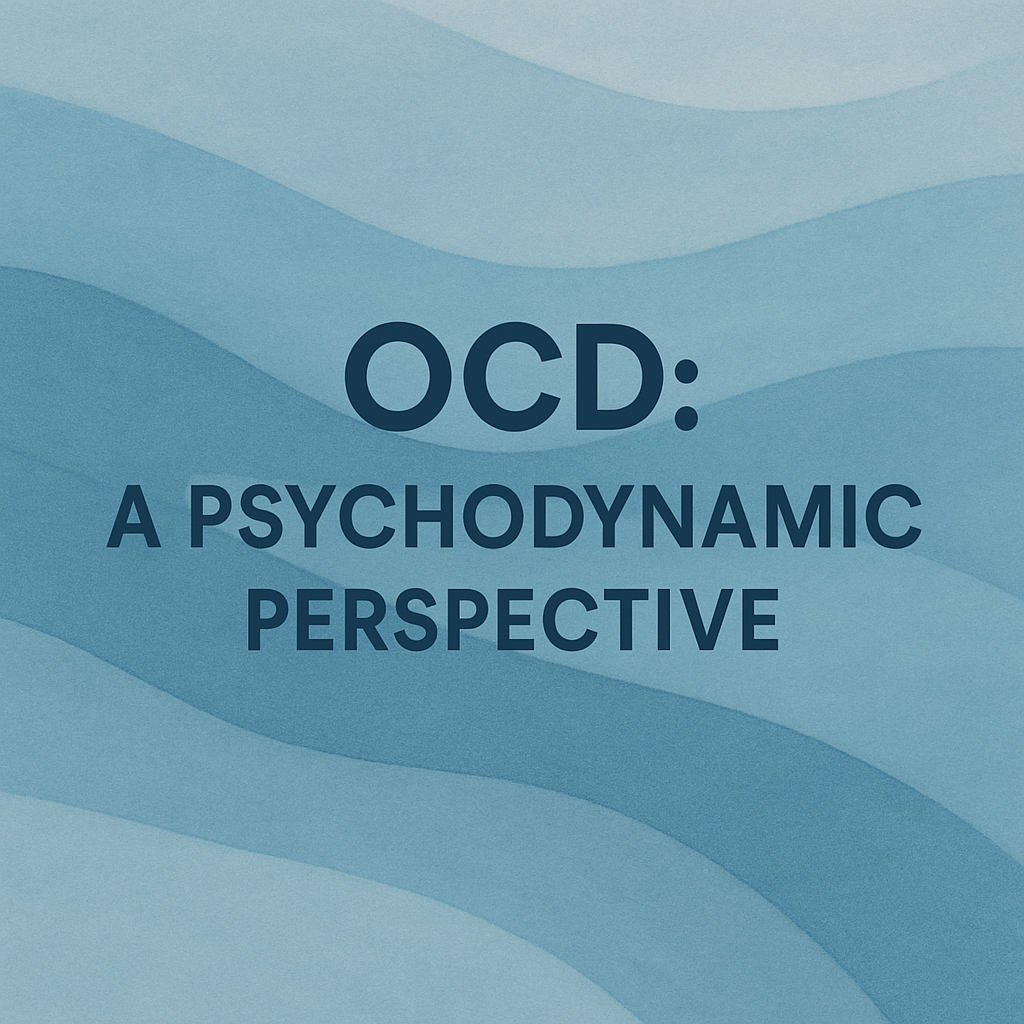We all know people who seem to live by lists, rules, and rituals. They’re reliable, conscientious, and often deeply caring—yet something about their inner world feels tightly wound, as if emotion itself were a dangerous mess to be cleaned up. Psychodynamically, obsessive and compulsive personalities grow out of an early struggle to manage feelings of anger, shame, and fear of punishment. Over time, control becomes a way of life, promising safety but also narrowing the range of spontaneity and connection.
This post takes a closer look at the inner life of obsessive and compulsive personalities—their origins, defenses, and relational patterns—and considers how therapy can soften the rigid edges of a life organized around control.
Early Roots and Core Conflicts
Obsessive and compulsive personalities often trace back to strict or intrusive childhood environments. Early battles over control—particularly around orderliness, cleanliness, and performance—create a powerful inner critic. At the heart of this personality lies a core conflict: rage at being controlled versus fear of punishment or condemnation.
The Emotional Landscape
A hallmark feature is difficulty with emotion. Feelings are suppressed, muted, or intellectualized. Patients often answer questions about feelings with thoughts. Two emotions stand out: righteous anger (when framed as justified) and shame(when falling short of high standards). These emotions, though painful, can become entry points in therapy.
Defenses: Isolation and Undoing
Psychodynamically, the hallmark defenses here are isolation of affectAffect refers to the experience of feeling or emotion that can be expressed through facial expressio... and undoing.
- Isolation of affect allows obsessive patients to split thought from feeling. They can describe situations with great precision but seem emotionally distant, keeping messy or vulnerable feelings at bay. Higher-functioning individuals may rely on rationalization, intellectualization, or moralization instead of showing raw affect.
- Undoing, more characteristic of compulsive individuals, functions like a ritualistic eraser—an attempt to cancel out a forbidden thought or impulse by performing the opposite act. A hostile wish may be “undone” with excessive kindness, or a guilty fantasy erased through rigid cleanliness rituals. A child’s angry impulses toward a controlling parent might transform into compulsive tidiness or obedience. In adulthood, undoing can show up as repetitive checking, handwashing, or ritualized habits designed to neutralize guilt. These behaviors offer temporary relief but never resolve the underlying feelings, leaving the person trapped in a cycle of compulsion.
Across both styles, reaction formation (expressing the opposite of what is felt) and displacement of anger onto safer targets are common. The overall strategy is to idealize thinking and devalue emotion—associating feeling with weakness or loss of control.
Relational Patterns
Relationships often feel controlled, formal, and “juiceless.” Affection is replaced by duty or moralization. In therapy, these patients may project high standards onto the clinician, evoking irritation, boredom, or even physical tension. Yet beneath the rigidity is a touching capacity to attach, especially when the therapist responds with patience and warmth.
The Obsessive-Compulsive Self
Identity is built around order, duty, and moral rectitude. Spontaneity and strong emotion threaten the sense of self. Patients may procrastinate or act impulsively, unconsciously managing guilt and perfectionism. Shame and guilt—often linked to unconscious hostility—are central dynamics shaping how they view themselves and others.
TransferenceTransference is a phenomenon in therapy where clients project feelings and emotions from past relati... and CountertransferenceCountertransference occurs when therapists project their own feelings and experiences onto the clien...
In the therapy room, obsessive-compulsive patients often recreate early dynamics of judgment and control. Therapists may feel pulled into power struggles or tempted to criticize. Awareness of this process is vital. When the therapist resists these pulls, maintains kindness, and makes space for feelings, the patient gradually learns to trust the relationship.
Therapeutic Approach
The first rule in treatment is ordinary kindness. These patients are used to exasperating others and are grateful for tolerance. Therapy progresses when the clinician avoids hurrying, advising, or moralizing, and instead explores shame and invites the safe expression of anger or desire.
Equally important is recognizing undoing when it appears in the therapy process. By gently pointing out how rituals or “make-up acts” serve to cancel forbidden feelings, therapists help patients discover the emotions hiding underneath. Over time, this creates the possibility of genuine integration—rather than the endless cycle of erasing and repeating.
Modeling spontaneity, playfulness, and the enjoyment of “devalued” feelings (such as fantasy or tenderness) further softens rigidity and expands the patient’s emotional life.
Clinical Vignettes
One widow coped with her husband’s death by obsessing over funeral details, converting grief into endless busyness. Another patient filled sessions with trivial ruminations (diet choices, dog breeds), avoiding painful affect. These examples illustrate how ritual and thought protect against feelings—yet also block growth and connection.
Differential Diagnosis
It is important to distinguish obsessive-compulsive personality from organic brain conditions, narcissistic perfectionism, or schizoid detachment. A thorough history and attention to defenses clarify the picture. Isolation of affect and undoing point toward an underlying psychodynamic struggle rather than neurological damage.
Closing Reflection
Obsessive and compulsive personalities remind us of the human impulse to keep chaos at bay. The very traits that make these individuals steady, diligent, and principled can also bind them in cycles of perfectionism and guilt. In therapy, the goal is not to strip away orderliness, but to widen the frame—to invite play where there has been only duty, feeling where there has been only thought, and intimacy where there has been only control.
At their best, obsessive and compulsive people are capable of remarkable loyalty, clarity, and integrity. When therapy helps them reclaim disowned parts of themselves, they discover that freedom is not the absence of structure, but the ability to choose when to let go of it.





